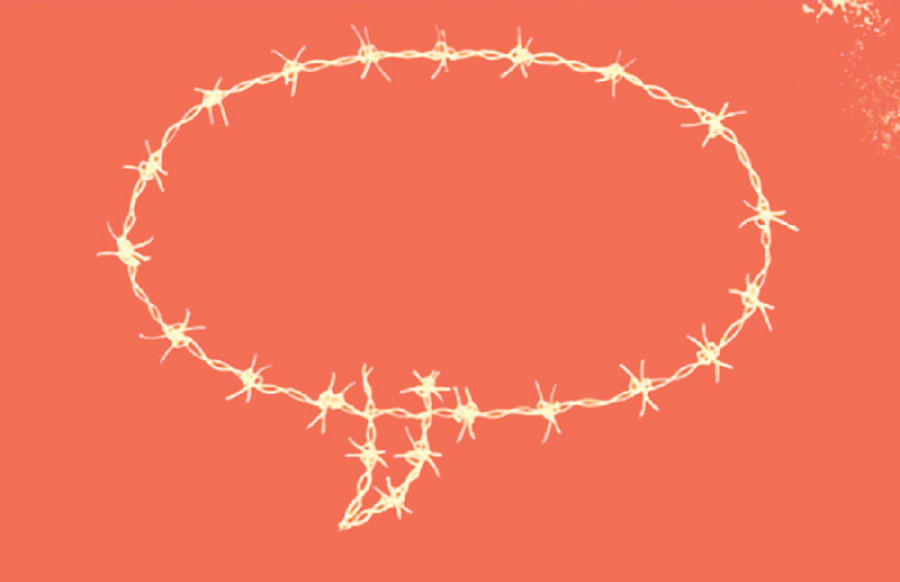Opinion
Southern bully
I am talking about India’s bullying of Nepal and the Nepali people. It happens at several levels—personal, communal and state. State-level bullying was exemplified by last year’s blockade.
Khagendra N. Sharma
I am talking about India’s bullying of Nepal and the Nepali people. It happens at several levels—personal, communal and state. State-level bullying was exemplified by last year’s blockade. It happened in the late 1980s during the king’s rule too. India did not support Birendra’s proposal to declare Nepal a zone of peace, and it imposed an embargo that lasted almost a year. On a personal level, I had a bad experience of being bullied way back in 1993. I was going to Banaras Hindu University to present a working paper at an international seminar on Nepal. I was travelling by bus from Sunauli to Varanasi. After we crossed the border at Nautanwa, customs officials stopped the bus and started their search operation. I was carrying a briefcase containing my working paper and spare clothes. I also had a large shoulder bag containing a sleeping bag and a mosquito net.
They opened my bag and spilled everything in it. When they did not find anything objectionable, they searched my whole body. Finding nothing, they told me to take off my shoes and socks. There was nothing, of course, so they left with my belongings scattered all over the bus. At that point, I could not hold myself, and told them in Hindi, “Tasalli hogayee?” (Are you satisfied?) If the people posted at the border can be so rude to a person who was educated in India, one can imagine how roughly they treat ordinary Nepali travellers. If they happen to be carrying dutiable items, the treatment is going to be worse.
Who has the answer?
There are several kinds of bullying at the communal level. One extreme example is the encroachment along the border. There have been over a hundred noticed cases of encroachment, which our government has ignored. The next level of bullying is building high dams on their side of the border, causing flooding in Nepal. Vast farmlands are inundated causing great harm to crops. But our government sits with folded arms, doing nothing. In another kind of bullying, security personnel beat up border residents, extract money from them and confiscate purchases from commuters. Similarly, Nepali pilgrims are bullied by ‘holy’ people at religious shrines. ‘Tirthayatris’ are literally divested of their money under different names and forms of making offerings to endless idols of deities. This holy bullying is extremely dangerous, sometimes even fatal, at the hands of Pandas (priests) accompanying innocent victims through dark avenues inside temples.
The worst kind of organised bullying is endured by Nepalis returning to Nepal from their work places in India, particularly during Dashain. All of them have brought their savings with them to spend during the festival and to pay back debts to moneylenders. Gangs of organised goons operate along the border, particularly in western Nepal because people in the western hills mostly go to work in India. These thugs have links with the local security people who protect them for a share of the loot. The hapless returning Nepalis are beaten up or drugged. Such cases are
frequently reported in the media, but hardly any action is taken against the perpetrators.
Why is there no protest from our side? Does it not reflect the submissive complacence of our government? Mutual reviews are supposed to take place more
frequently than once a year at different levels. What do they discuss during such review meetings? Why aren’t such matters discussed in our Parliament? Do our representatives go there with proper homework? Why is our government not sensitive about guarding our national frontier? Who should the people turn to if our government cannot protect them? Who has the answer?
National weakness
One thing is clear: Our leaders lack the nerve to stand erect as equals with their Indian counterparts. There is clear logic behind it. The government is made or unmade with Indian blessings or lack thereof. If India’s blessing is accepted as the basis of the government, it negates the presence of nerve to stand up against it. The present government has not been able to wash off this accusation. Given this moral weakness, the government is not likely to negotiate a solution to the problems raised in these columns with the government of India.
Another obvious source of national weakness is lack of trust among the political parties, particularly political leaders. Party leaders neither have consensus on national issues nor do they have any agreement on foreign policy. The new constitution is in limbo. The proposed federal structure is not even remotely taking shape. There was a conspicuous lack of preparedness regarding the required logistical arrangement and legal backing. There is now unbridgeable polarisation among the major political parties. The current Madhesi movement is the latest example of lateral bullying by India. India knows that the Madhes-based parties could not get significant popular support for their agenda during the election to the second Constituent Assembly. The southern neighbour imposed an embargo to boost the wrong Madhesi slogans. Indian support to the Madhesi movement is a vivid case of bullying of a weak neighbour.
Resistance to bullying cannot be strengthened unless the major political parties change their course and become united for the national cause. If the major political parties unite to settle the Madhes problem, they can succeed in bringing the Madhes-based parties together to accept the given political solution. But it requires sincere efforts on the part of all the parties. Sadly, this kind of wisdom is hard to come by given the Indian insinuation. By the time Madhesi ‘leaders’ realise that they were simply being used by their masters to secure their vested interests, Nepal may have broken up into pieces. Alas, if only the leaders, both in the plains and the hills, had a little wisdom to unite to protect national integrity. God save Nepal!
Sharma is a political analyst




 20.12°C Kathmandu
20.12°C Kathmandu










